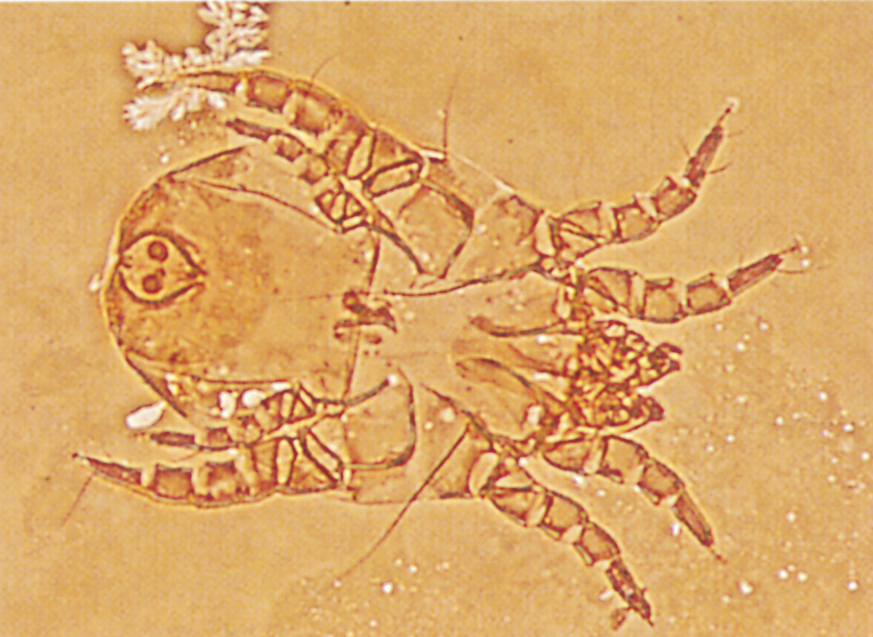( Latin: Acarus siro)
This is the commonest species of mite in foodstuffs; it has reddish legs. Flour mites can live in almost any kind of flour or in fodder and, not least important, in stores of seed and corn. They are also to be found on old cheese. A single female can lay up to 500 eggs during its life.
After hatching the life cycle consists of a larval stage, two so-called nymphal stages, and the adult stage, which at 25° C is reached in three weeks. These• mites can go through their life cycle at a temperature as low as 4° C, but they do require adequate humidity, and will not thrive if the relative humidity is less than 65 per cent.
Flour mites are able to survive periods with unfavourable conditions. After the second nymphal stage they may pass into what is known as a hypopus stage, in which they are almost immobile and very resistant to desiccation. In the hypopus stage they can also be transported, e.g. by flies.
If there is any doubt as to whether flour is infested with mites it is only necessary to spread a little of it out on the table and leave it for a quarter of an hour. If mites are present the surface of the flour will become uneven, as the mites start to wander about.
Mite-infested foods acquire a characteristic sweetish, sickly smell, and a taste which renders them unsuitable for human consumption. Heavily infested products are definitely injurious and should be discarded.
The only effective method of controlling mites is to ensure that the food in question is stored as dry and as cool as possible.






